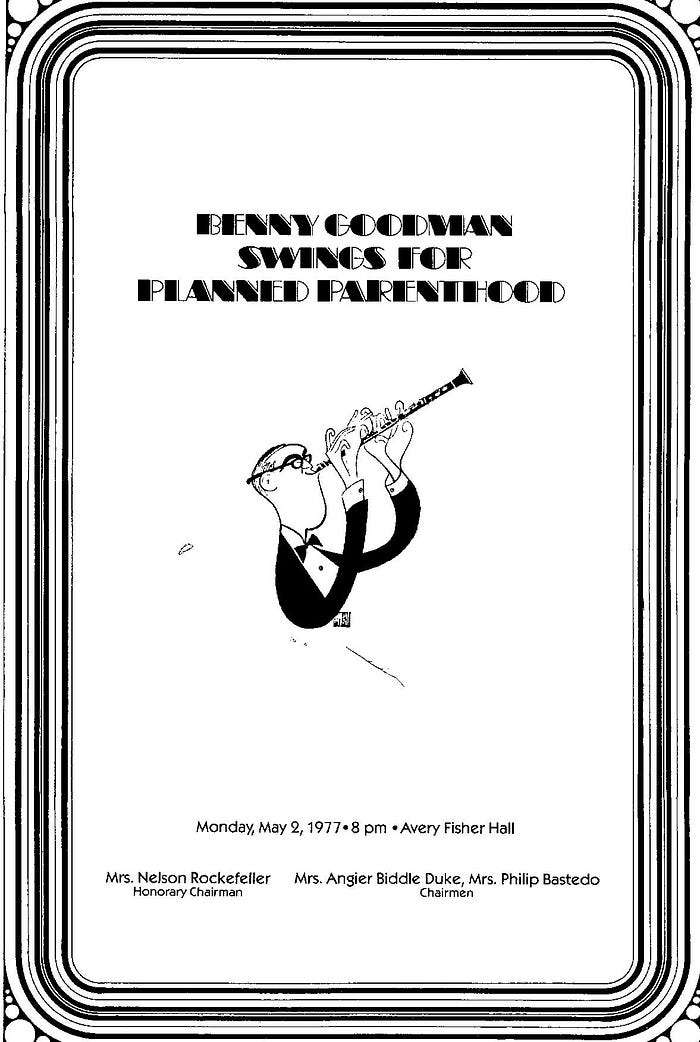How a Kids Band in Barcelona Rekindled My Love of Jazz
My story is probably not much different from others who have discovered Barcelona’s Sant Andreu Jazz Band in recent years. And I’ve previously recounted on this platform my own version of how I “discovered” the SAJB for myself. But perhaps a bit more backstory would put things in a clearer context.
The headline of this piece may be somewhat misleading. I never stopped being a jazz fan at any point in my life. In fact, I can’t remember a time, even in my childhood, when I didn’t like jazz. I may not have heard it often, or understood and appreciated its nuances (I guess I still don’t), but I’ve always loved the sound of it.
One school day in 1973 or thereabouts, when I was in the 6th grade, I came home for the school’s one-hour lunch break as usual, watched some TV as I had lunch, but afterwards I also — and for no particular reason — decided to browse through my parents’ record albums on the shelf in the closet where they had set up the stereo equipment. I came upon the 1950 double album of the Benny Goodman band’s live recordings from 1937–38, when his big band, and famous quartet, were arguably at their peak. Out of curiosity, I placed one of the records on the turntable, put the needle down, and “Sugar Foot Stomp” came blaring out of the speakers. Wow! What a sound — the trumpets, saxes, trombones, the pounding beat, the catchy melody, the applause... I loved it immediately. I continued on, listening to the band play “King Porter Stomp,” which elicited an even bigger “Wow!” from me than the previous number. I was hooked. I realized I loved swing. I loved Benny Goodman and his band immediately. But, of course, at that moment I needed to return to school.

I was a rather strange kid at the time. Here I was, just entering my teens, and listening to music that was almost forty years old at the time, and watching classic Marx Brothers films in the middle of the night from that same era…it’s safe to say that few if any of my friends were interested in hearing about this old-fashioned stuff. But that didn’t really bother me.
What I did begin doing, however, was plead with my parents to buy me big band records, which they gladly did. I memorized the album of Goodman’s historic Carnegie Hall concert of 1938, and wanted to give all of the bandleaders a try — Glenn Miller, Tommy Dorsey, Count Basie — anyone who led a big, swinging band in the ’30s and ‘40s. I read about them in books, learned who many of the individual musicians, composers and arrangers were, you name it. I guess I had also inadvertently rekindled my parents’ own appreciation of the very music to which they grew up dancing as high school sweethearts.
We lived in New Jersey, only about ten miles from the George Washington Bridge crossing into Manhattan, so my new habit became that of looking for upcoming live concerts in the New York area by many of those same original bandleaders. This led me to do some more pleading, but now it was to see the bands perform live whenever they’d come to New York or New Jersey. And, with my parents being as accommodating as they were, we did just that (they were also kind enough to regularly drive me into the city whenever a Marx Brothers film festival played at a revival movie theatre).

So, at my urging and with their kind indulgence, we attended a number of Benny Goodman concerts, with both his big band and sextet, at venues like the jazz festival in Central Park, Carnegie Hall, and Lincoln Center. We also attended a Count Basie concert (with the legendary pianist Eubie Blake as the opening act), Woody Herman and his Thundering Herd (too loud), and Glenn Miller’s band, led by his longtime trombonist Murray McEachern. Of course, I was the youngest attendee at each event by at least thirty years.
What has all this got to do with the Sant Andreu Jazz Band? We’re getting to that, I promise.
At some of those Benny Goodman concerts, we also sneaked in our portable cassette recorder, tucked away deep at the bottom of my mother’s handbag, and recorded — somewhat crudely but with pretty decent results — two of his appearances: one featured Goodman and his All-Star sextet at a theatre-in-the-round in Nanuet, New York, in 1975. His sextet at the time included Urbie Green, Zoot Sims, Hank Jones, Bucky Pizzarelli, Slam Stewart…even as a newbie jazz fan, I was in awe.

Our other recording was Goodman’s big band concert at Avery Fisher Hall in 1977, which included a full performance of Gershwin’s “Rhapsody in Blue,” using the arrangement as performed by Paul Whiteman and his orchestra for the composition’s big debut in 1924.

One of the younger musicians in the band that night was a saxophonist named Scott Hamilton. He was just in his early twenties and went to some effort to emulate the quintessential musician of the 1930s — not just musically, but in how he presented himself as well.

I seem to remember Hamilton from that time with his moustache, dark hair slicked back, wearing pinstripes and two-toned wing-tip shoes. But my 50-year-old memories might be jumbled just a bit; I don’t know if Benny Goodman would have permitted such a deviation of couture within his band, or if I had seen Hamilton present himself in such a way elsewhere. Still, I remember being impressed that he was apparently striving to hearken back to the Golden Age of jazz visually as well as musically.

We surreptitiously recorded this concert in Avery Fisher Hall, and I still have the tape of this concert, and that of the Nanuet gig, and still play them on occasion (a friend has since kindly transferred them to CDs to ensure their longevity).
While in high school, I discovered three jazz radio stations in my area: WBGO in Newark, WKRC in Manhattan (broadcasting from Columbia University), and WRVR, which played mostly contemporary jazz. Having three jazz stations at my disposal opened the doors to a deeper self-education, as I’d scribble down the names of the more compelling tracks I’d hear, and then bring the notes with me for my next visit to Tower Records or Disc-O-Mat.
And, thanks to the Manhattan Transfer, I finally began to appreciate jazz vocals, whereas I previously had little interest in big band singers, preferring the instrumental versions of the standards instead. With the tremendously talented Transfer as my starting point, I worked my way backward in time to Lambert, Hendricks & Ross, Ella Fitzgerald, Louis Armstrong, and other legends.

Another stroke of luck came a few years later, in the mid-1980s, when I discovered a neat little jazz club named Struggle’s in Edgewater, on the Jersey side of the Hudson River. It was just down the highway from my hometown and attracted the cream of the crop in the jazz world, so I was destined to become a semi-regular customer, depending on who was on the bill for any given weekend. Among the musicians I had the pleasure of seeing there were Etta Jones and Houston Person, Zoot Sims, and a certain Mr. Scott Hamilton again, who often shared that stage with other top players of the day.

In the mid-1980s and early ’90s, former Manhattan Transfer singer Laurel Masse, who quite possibly possesses the most beautiful voice I’ve ever heard, made a number of wonderful solo albums, and performed at gigs in New York at such venues as The Blue Note and The Bottom Line.

I thought she was wonderful, so I wrote the first and only fan letter of my life to her, which she graciously answered several months later in a handwritten note:

When I attended her appearance at the Bottom Line in 1993, my friend and I arrived early. I took a chance, and brought with me a pre-written a note to her, asking if I could say hello for a moment before she took the stage for her set. Just as I had seen it done in movies and on TV programs, I handed the note to an employee, who delivered it to her backstage. A moment later, she appeared, asked the employee to point out who had written the note, and then came over to us, saying, “How could I not say hello after reading a wonderful note like that?” My heart was all aflutter. We chatted for a while before she returned backstage to prepare for the set, which was, of course, terrific.
With so many jazz sources to indulge in at that time— especially from radio each and every day — my familiarity with different musicians and styles grew, as did my record collection (although I’m sure it would still be considered quite modest compared to those of most jazz aficionados). My love of bossa nova, originally ignited by my parents’ Jobim albums when I was a kid, grew stronger as well. To this day, I listen to Jobim and other bossa nova albums almost exclusively during the spring and summer months. To me, summer sunshine and warm breezes = bossa nova.

The years went by, I moved away from New Jersey — and away from those great jazz radio stations — got married, later returned to New Jersey, etc. But my exposure to jazz began to suffer. I still managed to discover a few dazzling musicians/singers on my own, like Diana Krall, but those revelations had become few and far between, the result being that my passion for jazz had become somewhat dormant for a number of years.
With the birth of YouTube and online music services and sites, I was able to re-connect with jazz on a limited basis, while still occasionally purchasing new CDs by my established favorites, plus a few I managed to discover by chance.
And, finally, came the day…October 11, 2019. I was on YouTube, casually scrolling down a column of screen grabs for videos by the great Brazilian jazz singer and pianist Eliane Elias. But mixed in with that column for her videos was an image of a young girl — playing a trumpet. The image was from her video of Jobim’s “Mediation” (or “Meditacao” in the original Portuguese):
2013 Meditaçao ANDREA MOTIS JOAN CHAMORRO QUINTET & SCOTT HAMILTON
Then I noticed several more videos from a different performance, but the same girl, the same jazz club — and in Barcelona, of all places.
Chega de saudade Andrea Motis Joan Chamorro Quintet & Scott Hamilton
Intrigued, I clicked on the image, and the video began. The girl was Andrea Motis. She looked so young, sang so beautifully and with such quiet confidence for her age, and was backed by a fine group of musicians, one of whom I recognized immediately as none other than the great Scott Hamilton. The lightning bolt had struck. After watching that video, I found another video of Andrea, and another, and many more, leading to those of the “Fab Four” as I call them (Andrea with Rita Payes, Magali Datzira, and Eva Fernandez), along with the rest of the Sant Andreu Jazz Band.
This eventful morning took place just a few years after both my parents had passed away. As I experienced my first videos of Andrea and the SAJB, one thought that kept repeating itself in my head was how thrilled my parents would have been to see such young kids — an ocean away, no less — learning and playing all of those American standards from so long ago. Even now, every time I watch a performance by the band or an individual SAJB member, I have an imaginary conversation with my mom and dad, as if they’re sitting and watching it with me (“See that girl? That’s Alba Armengou, she’s a brilliant trumpet player and singer. Listen to her on this song…” just as an example). I know they would have been impressed, even amazed, by this band.
I promptly re-posted many of the SAJB videos on my own Facebook page, with limited feedback from my friends. Frustrated by their ignorance and disinterest, I wrote an online article about the band, based on what I had learned from piecing together bits of information as I found them. I then dared to contact Joan Chamorro directly — not really expecting a reply — but he was gracious enough to read through the rough draft of what I had written to that point, offered more accurate information than what I had gathered on my own, and even scolded me for writing primarily about the girls in the band, and not much about the guys — to which I pleaded guilty. In my defense, I was still stunned by the very sight of teenage girls singing and playing trumpets, saxophones, and trombones on big band swing numbers from the 1930s and ’40s — and doing it all so exceptionally well! I had never seen nor heard anything like it. As far as I knew at the time, young girls just didn’t play jazz. I was ecstatic to see how mistaken I was. So, at first, I wrote mostly about the girls.

I self-published that first article online, on New Year’s Day, 2020. It received a much more favorable response than I could have anticipated, thanks in large part to Chamorro re-posting it on several of his own Facebook pages. Two fellow SAJB fans, Bo Sybrandt Hansen (from Denmark) and Bengt-Ove Bostrom (from Sweden), who had been following the band far longer than I had, messaged me with compliments for the article (Bengt-Ove has written several excellent pieces of his own about the project). I explained that it was simply my modest attempt to spread the word to Americans about Chamorro’s amazing accomplishments with these young musicians, who display talent way beyond their years.
(I have since deleted that first article, seeing in retrospect how poorly written it was. I’ve replaced it with several pieces that I hope have done a better and more complete job of celebrating the SAJB and its history.)
The three of us discussed ways in which we could inform others around the world who might not be aware of the band. After some brainstorming, we arrived at the idea of a Facebook group page for sharing information, videos, photos, news, etc. to whoever would like to take a more active part in enjoying and celebrating the project.

The page, Friends of Sant Andreu Jazz Band (FOSAJB), was launched on March 20, 2020, and grew to over 3,000 members around the world in just over six months. As of this writing, membership is approaching 8,000. Bengt-Ove opted to leave his role of co-administrator, but he remains a valuable contributor, while Bo and I continue to keep a sharp eye on SAJB activities each day, posting items we hope our group members would enjoy.

While I consider myself basically a nobody in the world of jazz journalism — I’m not a musician, I have a modest collection of recordings, and a decent but hardly encyclopedic knowledge of jazz — the combination of co-administrating the FOSAJB page and having previous, extensive writing experience on other pop culture and entertainment topics, somehow gave me a rare bit of courage to begin requesting interviews with those related to the SAJB project, in order to enhance my articles with first-hand information and reflections of the musicians involved. After Chamorro, Elia Bastida was the first to kindly answer a few of my questions (as she has done more than once since then).
It’s been a pleasure speaking with current and former band members, and some of the guest musicians who’ve played with the band in the past 15+ years. Of course, I was especially enthusiastic to speak with Scott Hamilton via video chat, and took advantage of the opportunity to relate my experiences of seeing him in Benny Goodman’s band, and later at Struggle’s. I wasn’t expecting him to remember playing there, considering the countless venues, both big and small, at which he’s played in the forty years since. To my pleasant surprise, he remembered immediately as his voice jumped an octave. “Oh, yeah, Struggle’s in Edgewater! We were like the house band there!” he chuckled. I held some of the items pictured in this piece up to my laptop camera for him to see. It felt like coming full-circle in a way.

Thanks to Joan Chamorro and the kids of the SAJB, I have, among other things, finally learned the lyrics to many standards I had only known as instrumental versions from the Big Band Era. I’ve also heard many numbers played by the SAJB that had been mostly relegated to old recordings (where else can you hear something like “Moten Swing,” Count Basie’s original theme song, performed by a live band these days?). But the rewards have been far greater, especially the enjoyment of seeing this special music kept alive and healthy, thanks to a visionary leader and many extraordinary young, talented musicians in Barcelona.
And, even better, Mom & Dad just might be somewhere dancing to that music once again…
Until next time…
If you enjoyed this article, please click the “follow” button and follow me on Medium (no charge) for more articles on popular culture, music, films, television, entertainment history, and just plain history.
You can also become a member in the Medium Partner Program to help support my writing. https://garryberman.medium.com/membership
Read my previous articles about the Sant Andreu Jazz Band at the links below, and at the “Garry’s Blog” page on my website, www.GarryBerman.com.
“Jan Domenech’s New Chapter as a Jazz Musician” https://garryberman.medium.com/jan-domenechs-new-chapter-as-a-jazz-musician-e1f0da8b19b9
“Joan Chamorro and the SAJB: Past, Present, and Future” https://medium.com/@garryberman/joan-chamorro-and-the-sajb-past-present-and-future-573eedcbff76
“Josep Traver: Guitarist of All Trades” https://garryberman.medium.com/josep-traver-guitarist-of-all-trades-608296f9d00a
“When American Jazz Pros Meet Spanish Jazz Kids” https://garryberman.medium.com/when-american-jazz-pros-meet-spanish-jazz-kids-25c7f5023571
“Claudia Rostey: The Life of an 18-year-old Bacelona Jazz Trombonist” https://garryberman.medium.com/claudia-rostey-the-life-of-an-18-year-old-barcelona-jazz-trombonist-d13b82c770a3
“The Magic of the Voice: The Singers of the Sant Andreu Jazz Band” https://garryberman.medium.com/the-magic-of-the-voice-the-singers-of-the-sant-andreu-jazz-band-208dfb629221
“Jobim is Alive and Well in Barcelona” https://garryberman.medium.com/jobim-is-alive-and-well-in-barcelona-d384b40d8c2e
“Did Someone Say Anastasia Ivanova?” https://garryberman.medium.com/did-someone-say-anastasia-ivanova-dd6f67277c64
“Struck by (musical) Lightning” https://garryberman.medium.com/struck-by-musical-lightning-6583ecb0de13
Sant Andreu Jazz Band CDs are available at: https://jazztojazz.com/ , eBay, and Amazon.com.








